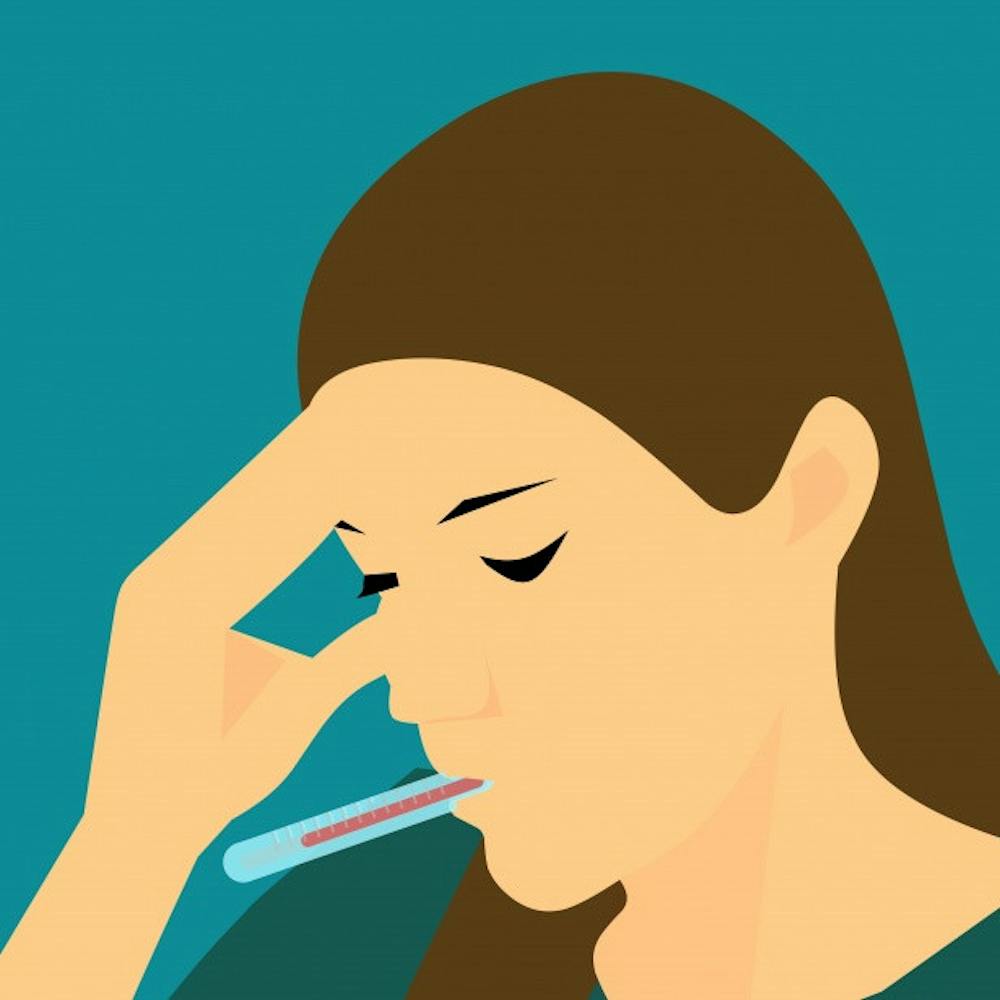Three years. Three years have passed since the emergence of the COVID-19 virus. Three years since “quarantine” and “mask-up” became a part of our daily vernacular. New coronavirus variants have been making headlines every day. A world of COVID-19 surges, masks and routine vaccinations is still settling as the new normal. After a hard-hitting “tripledemic,” a spike in the case numbers for three contagious viruses last year, namely the influenza (flu), COVID-19 and respiratory syncytial virus, what can we expect from the upcoming respiratory virus season this year?
David Dowdy, a professor of epidemiology at Hopkins, shared his thoughts on the recent state of COVID in an email interview with The News-Letter.
“[The latest COVID-19 uptick can be attributed to] reduced population immunity to infection since it has been 8 months since the last COVID-19 surge ... the longest time we’ve had between surges,“ Dowdy said.
On the other hand, Dr. Amesh Adalja, a senior scholar at the Johns Hopkins Center for Health Security, mentioned in an interview with The News-Letter that the uptick in COVID-19 cases could possibly be explained by summertime behaviors.
“When it gets hot, people congregate indoors,“ he said. “The virus is able to infect us despite being vaccinated, despite having prior infections.”
In response to the worrisome early flu season last year, Adalja claimed that we can expect a more or less “normal” flu season representative of one before the COVID-19 pandemic. This still means that we have to do our part to prevent the spread of viruses, such as staying home when symptoms arise, staying up-to-date with vaccinations and boosters and utilizing work-from-home days.
Experts use numbers from the Southern Hemisphere as a tool to model flu patterns in North America because the flu season there usually happens 2–3 months before ours. According to the Centers for Disease Control and Prevention (CDC), flu season arrived earlier and had a more severe impact compared to pre-pandemic times in Southern Hemispheric countries (especially Australia).
“[Epidemiologists] have some clues based on what happened in the Southern Hemisphere, where they had a moderately severe season,“ Adalja stated. “I do think that this flu season is going to be one of the more normal flu seasons, not like the ones we've had during COVID-19, which were relatively light.”
Several advancements in vaccinations and boosters in the past year may prepare us better for this year’s respiratory virus season. In fact, on Sept. 11, the Food and Drug Administration approved the latest COVID-19 vaccines from Moderna and Pfizer that target the most recent strain of the omicron variant, followed by the CDC’s approval of those shots on Sept. 12 for anyone above the age of 6 months. These vaccines target XBB.1.5, which has been in headlines since the beginning of the year. Though new variants have overtaken XBB.1.5, CDC experts assure the public that the new vaccine provides protection from “serious illness, hospitalization, and death.”
Both Dowdy and Adalja agreed on the importance of community-wide vaccination to curb COVID-19’s effects. Adalja specifically mentioned that immunocompromised patients and those with risk factors such as “obesity, pregnancy [and] cardiovascular diseases” should be proactive with COVID-19 and flu vaccines. According to Adalja, the benefit of recent boosters for COVID might be smaller for low-risk populations such as younger and healthier people compared to more vulnerable populations. However, experts still state that boosters can help reduce the duration and severity of illness if infected.
Moreover, Dowdy mentioned another tool we have as a community to combat illness this respiratory virus season. He emphasized that it is not an alternative, but rather a complement, to vaccination efforts.
“We should also be promoting options for letting people work and study from home when they are feeling sick,” Dowdy said.
As three years have passed since the beginning of the COVID-19 pandemic, the disease is still considered novel as compared to the 100 years of research against the flu after the 1918 pandemic. It will be interesting to see whether the solutions and outcomes of the fight against COVID-19 are similar to or different than the flu after a century of research, development and implementation.
A notable phenomenon now is that people seem to be navigating the COVID-19 pandemic based on their own judgment and often at very different extremes, largely due to how out-of-sync official guidance is with how people are behaving. Furthermore, the inaccessibility of resources such as free over-the-counter self-testing is an issue that needs to be addressed as well. This upcoming respiratory virus season will further shed light on how people’s behaviors and socio-political factors interact together to affect our standings in the fight against those contagious viruses.





